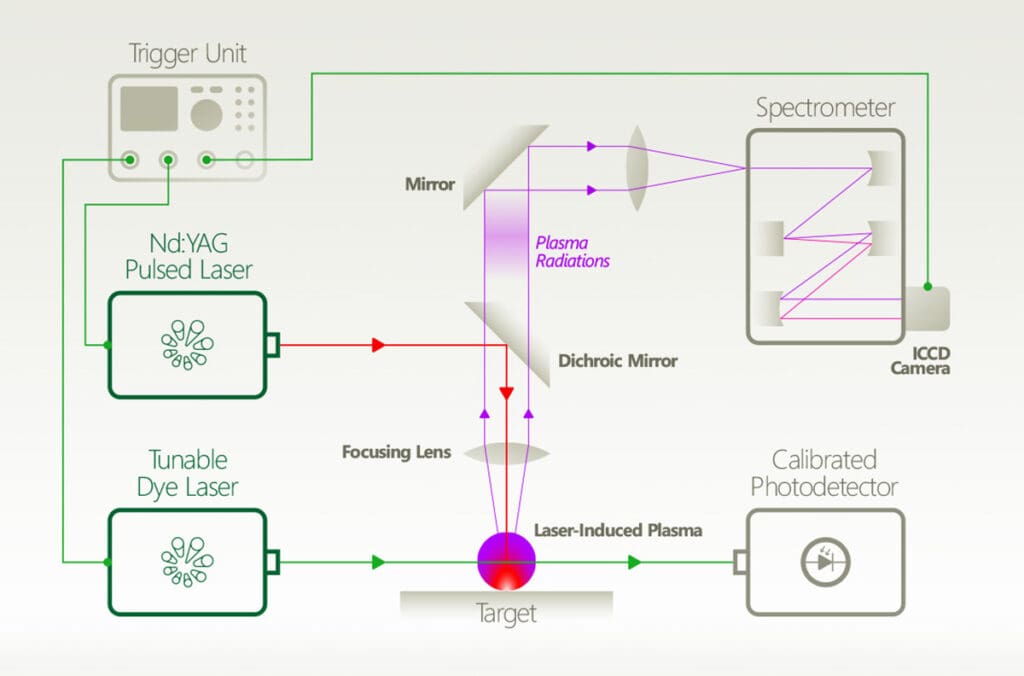Laser-induced plasma, particularly with the precision of Ekspla lasers, has become a cornerstone in various diagnostic and technological applications, ranging from detection and thin film deposition to elemental identification. Laser-Induced Plasma Spectroscopy (LIPS), also known as Laser-Induced Breakdown Spectroscopy (LIBS) or Laser Spark Spectroscopy (LSS), harnesses Ekspla lasers for swift in-situ analyses of solid, liquid, or gaseous samples, demonstrating its versatility across mediums. Some examples include on-line monitoring in the steel industry, control of materials and leakages in power plants, environmental analyses (soils, waters), analyses of objects related to Cultural Heritage, explosive identification in the protection against terrorism and planetary exploration (surface characterization).

Pulsed laser deposition is a thin film deposition (specifically a PVD) technique, where a high power pulsed laser beam is focused inside a vacuum chamber to strike a target of the deposit material. Conceptually and experimentally, pulsed laser ablation is an extremely simple technique; probably the simplest among all thin-film growth techniques.
With progress in short-pulse laser techniques, newly generated plasma applications appear. Extreme ultraviolet (EUV) sources based on laser-produced plasmas (LPP) emitting at a wavelength of tens of nm are currently being developed with tremendous effort for the next generation of semiconductor microlithography. Besides high-power sources for high volume manufacturing, compact EUV sources of lower average power are also needed for metrology purposes, for example, for mask inspection, actinic material testing, or optics and sensor characterization. Moreover, tabletop LPP sources are also employed to generate soft x-ray (SXR) radiation for microscopy or absorption spectroscopy in the water window spectral range (2.2–4.4 nm).
The availability of synchrotron x-ray and laser-plasma x-ray sources have revolutionized the capabilities of time-resolved x-ray diffraction investigations, the development of streak camera x-ray detectors, static and streak mode charge-coupled device (CCD) x-ray area detector techniques, and specialized scintillation detection schemes.
Related Articles:
- Effects of pressure and substrate temperature on the growth of Al-doped ZnO films by pulsed laser deposition
- Soft x-ray emission from laser-produced strontium ions
- Optical coherence tomography (OCT) with 2 nm axial resolution using a compact laser plasma soft X-ray source
- XUV spectra of 2nd transition row elements: identification of 3d–4p and 3d–4f transition arrays
- Initiation of vacuum insulator surface high-voltage flashover with electrons produced by laser illumination
- Peculiarity of convergence of shock wave generated by underwater electrical explosion of ring-shaped wire
- Emission properties of ns and ps laser-induced soft x-ray sources using pulsed gas jets
#PhotonMission #Ekspla #Laserinduced #LIBS #LSS #LIPS #enlightenedbyPM
